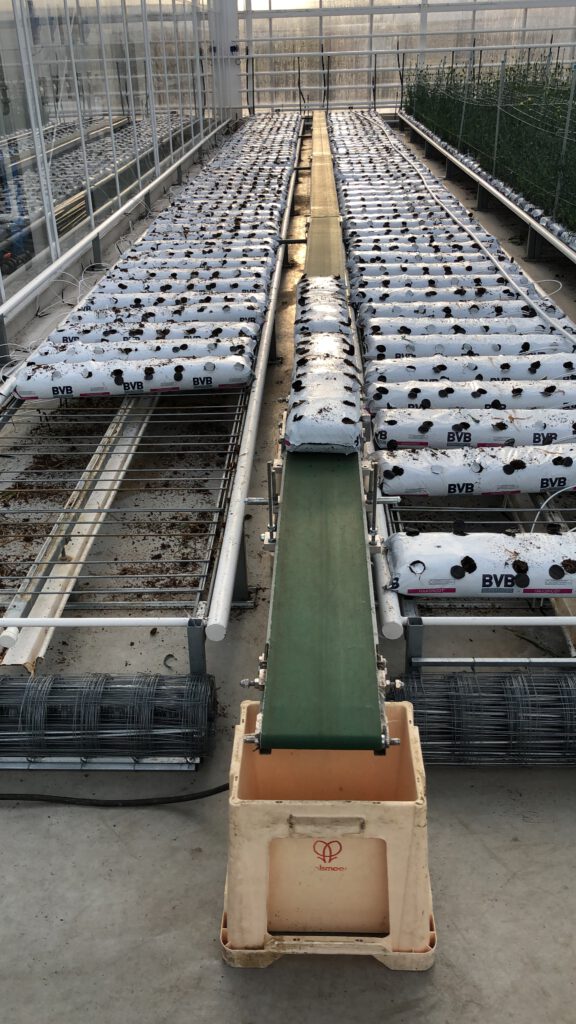Carnation cultivation
Our carnation season runs from late April to early November. We harvest our Mediaverdi-carnations from August to November. We are specialized in growing a wide and innovative assortment of carnations.
Our carnation season can be divided into four phases:
Preparation and planting
Growth and crop care
Harvest, preparing for sale, and crop care
Digging up the spent plants and preparing the greenhouses for the snowball bush season
Step 1
After the Viburnum season has ended the greenhouse is cleaned and the new substrate is spread out on the grow beds. This substrate consists of a mixture of peat and coco coir fiber and has been enriched with organic soil enhancing fungi and bacteria. Finally the greenhouse is further equipped with plant supports and the watering system is set up.
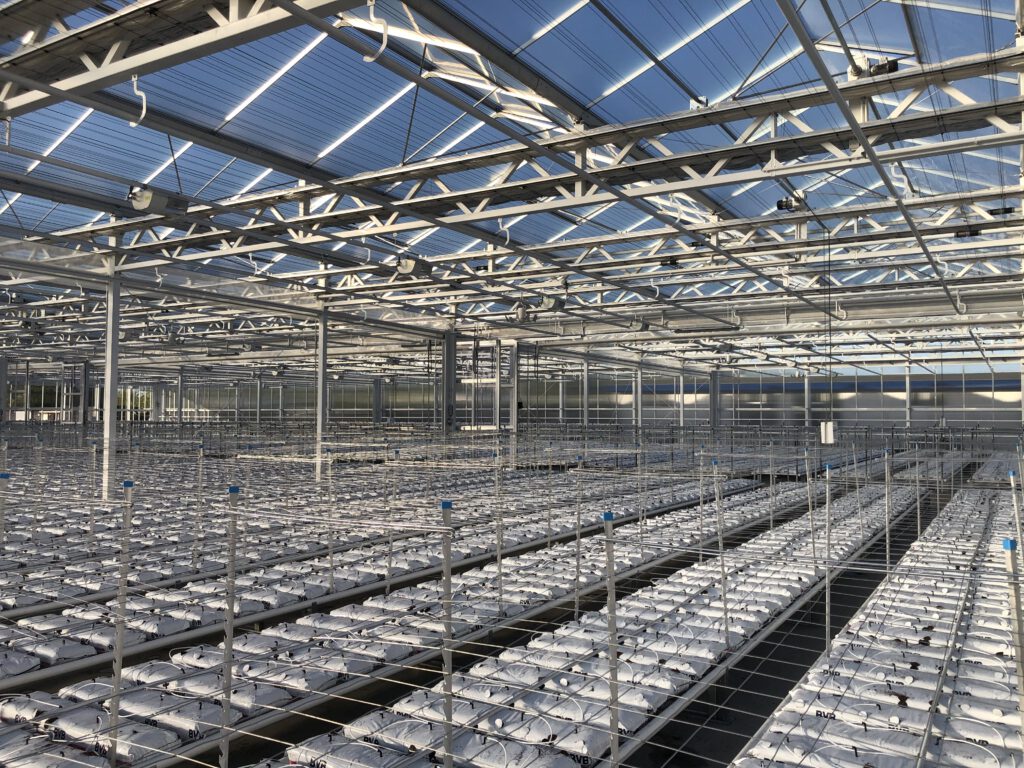
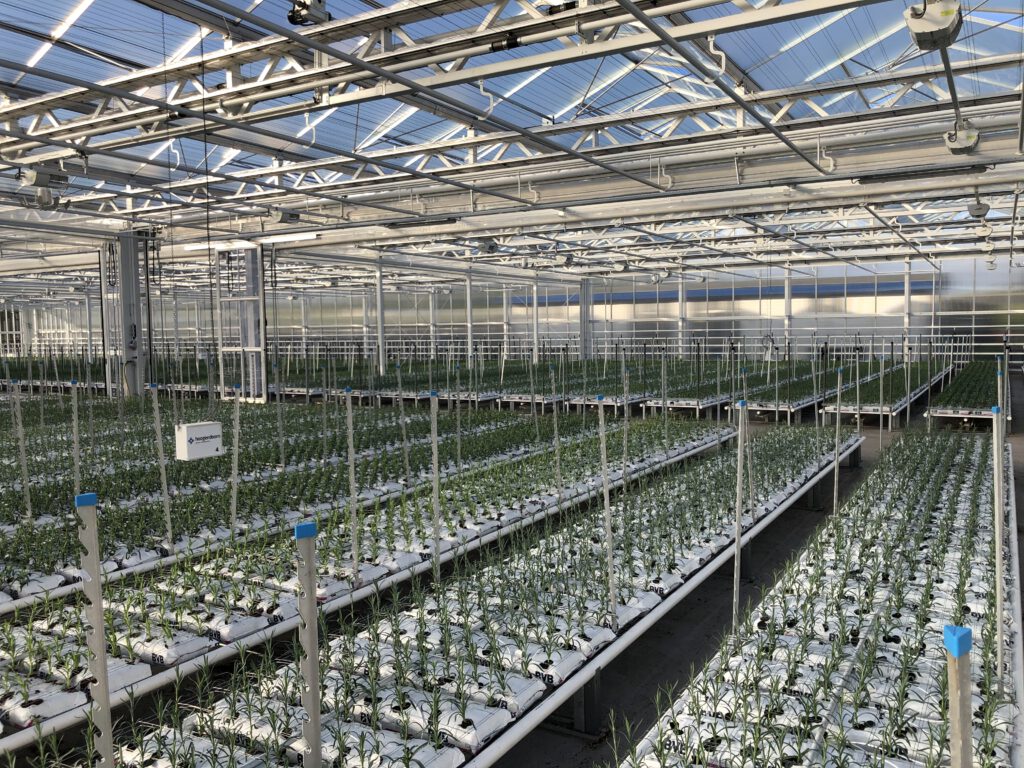
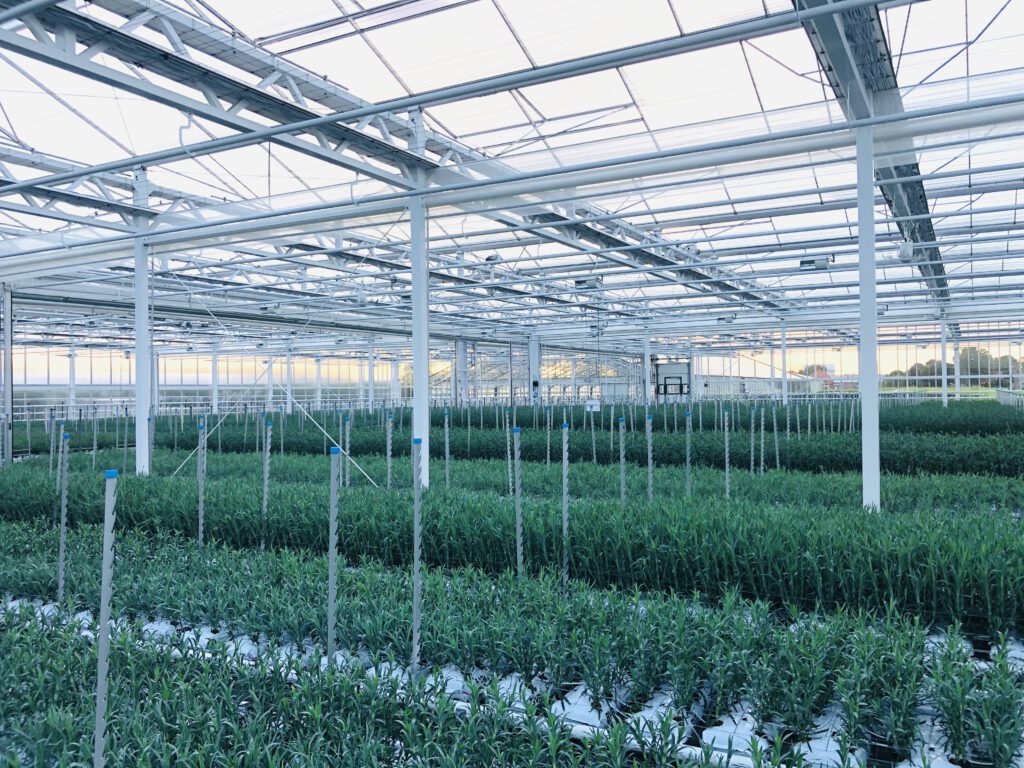
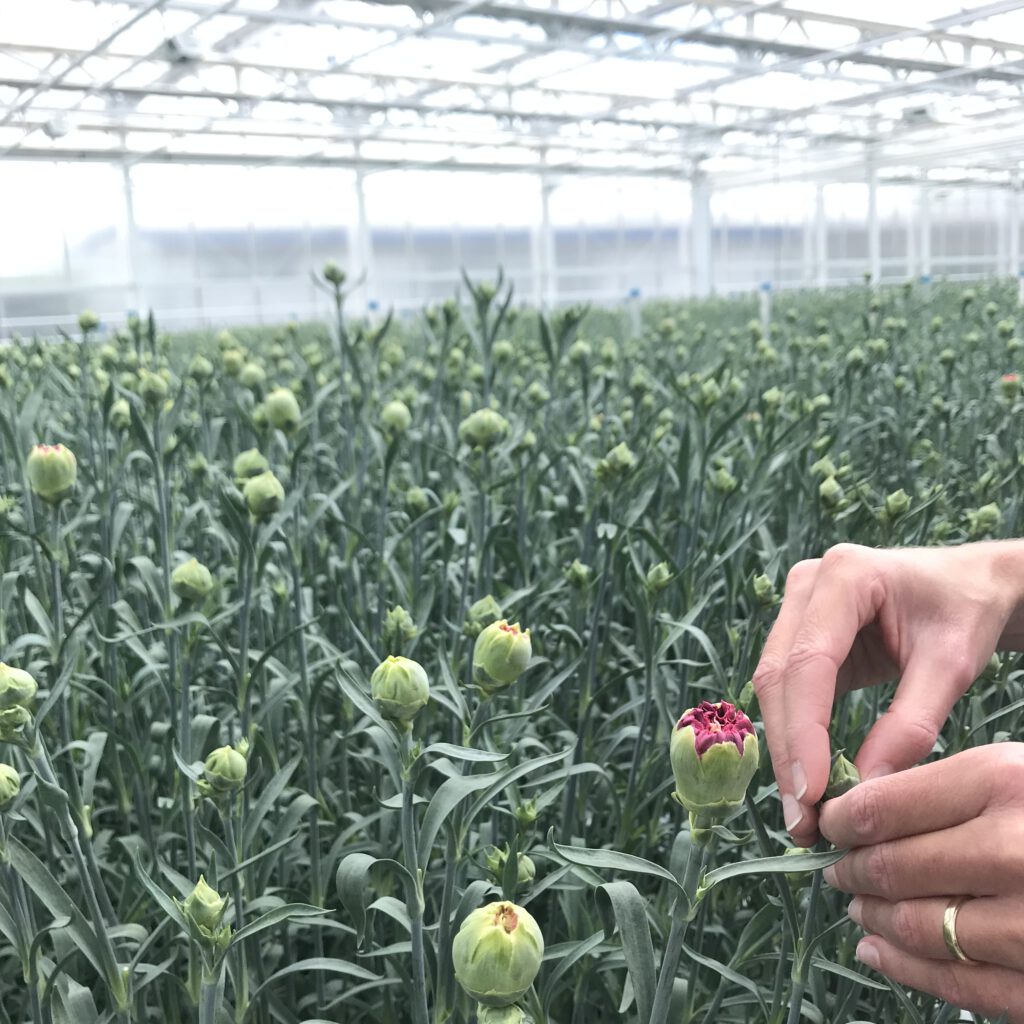
Step 2
About two weeks after planting we start pinching out the tops of the plants. After this the plants enter a branching out and growing phase. During this period the cultivation work consists of various crop care routines. Also we are able to do some maintenance and repairs at this time. In mid-July we start picking through the earliest varieties.
Step 3
From early August we start harvesting the first Carnations and we continue to pick through the remaining plants. After harvesting the Carnations are treated according through the existing regulations. This is done in order to protect the Carnations from ethylene gas. This gas is emitted by for instance ripening fruits, and it speeds up the aging process in Carnations, resulting in a shorter shelf life.
This is also the reason why we advise not to place Carnations in the proximity of fruit. Following the treatment the Carnations are sorted into three categories and are readied for sale or auction.
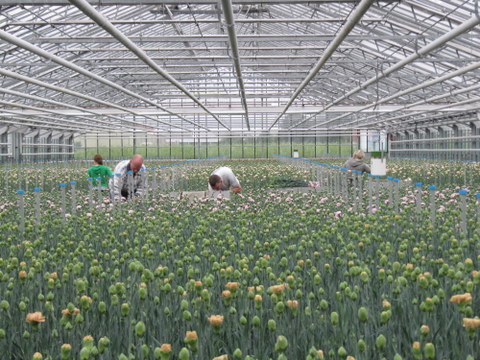
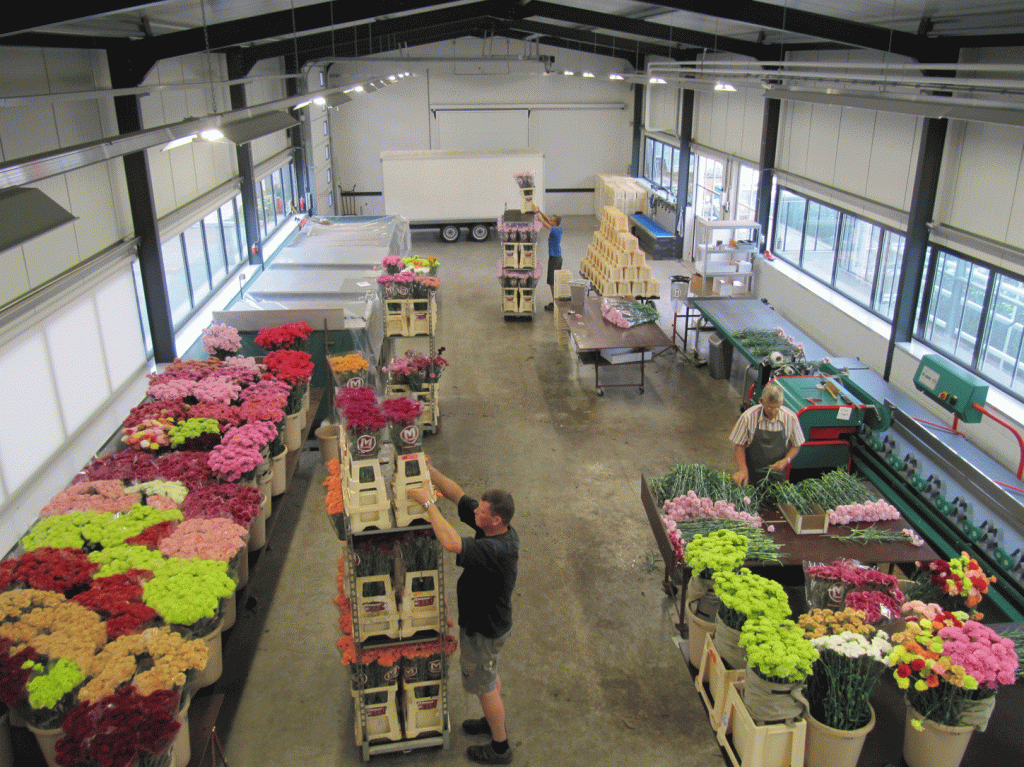
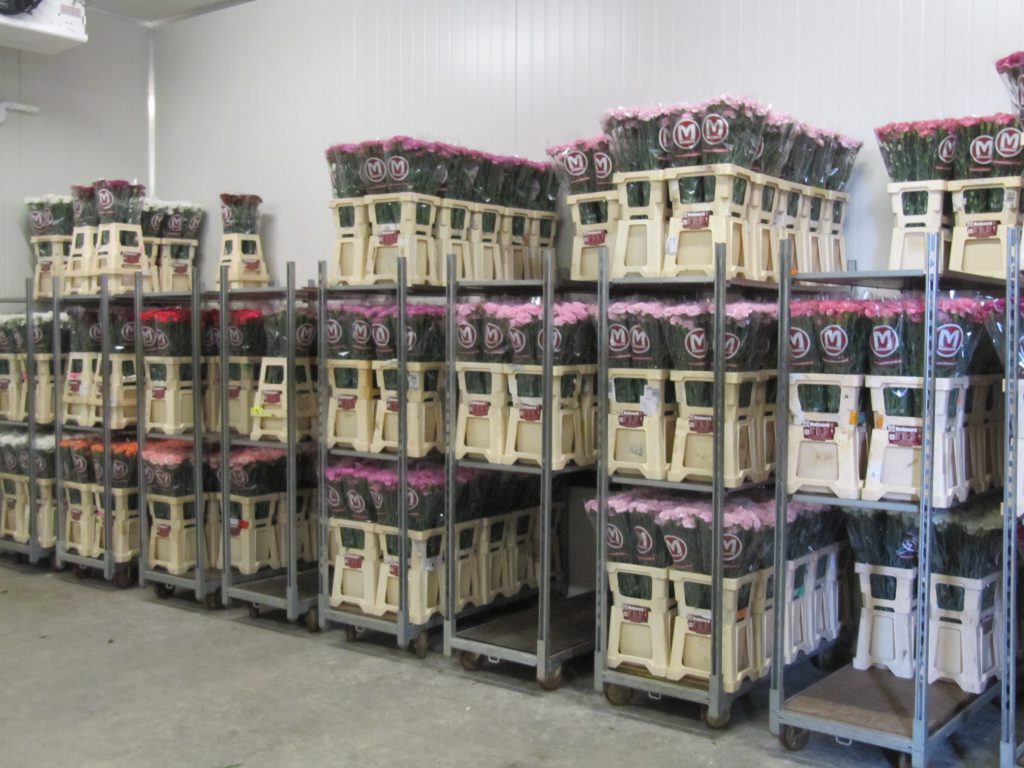
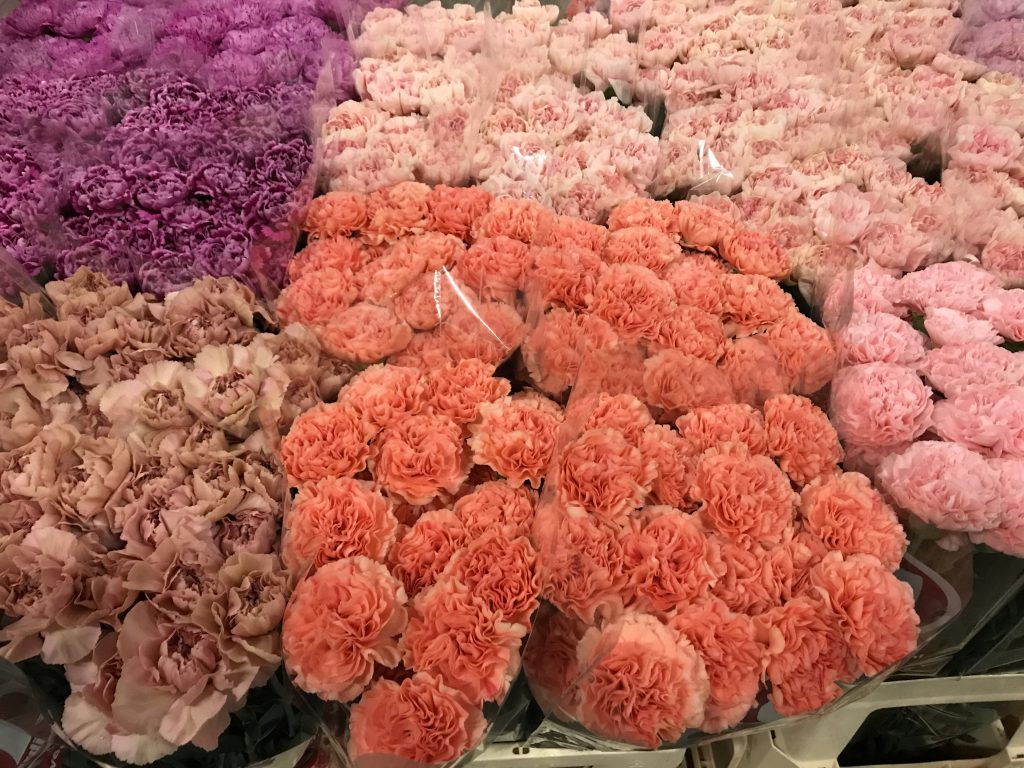
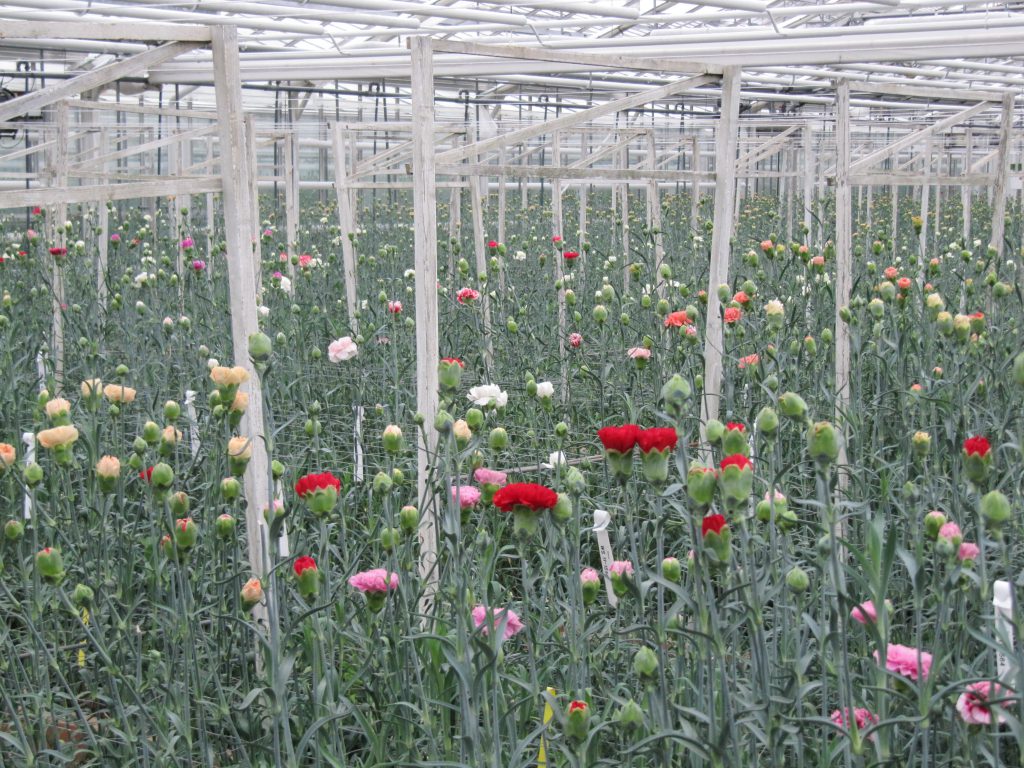
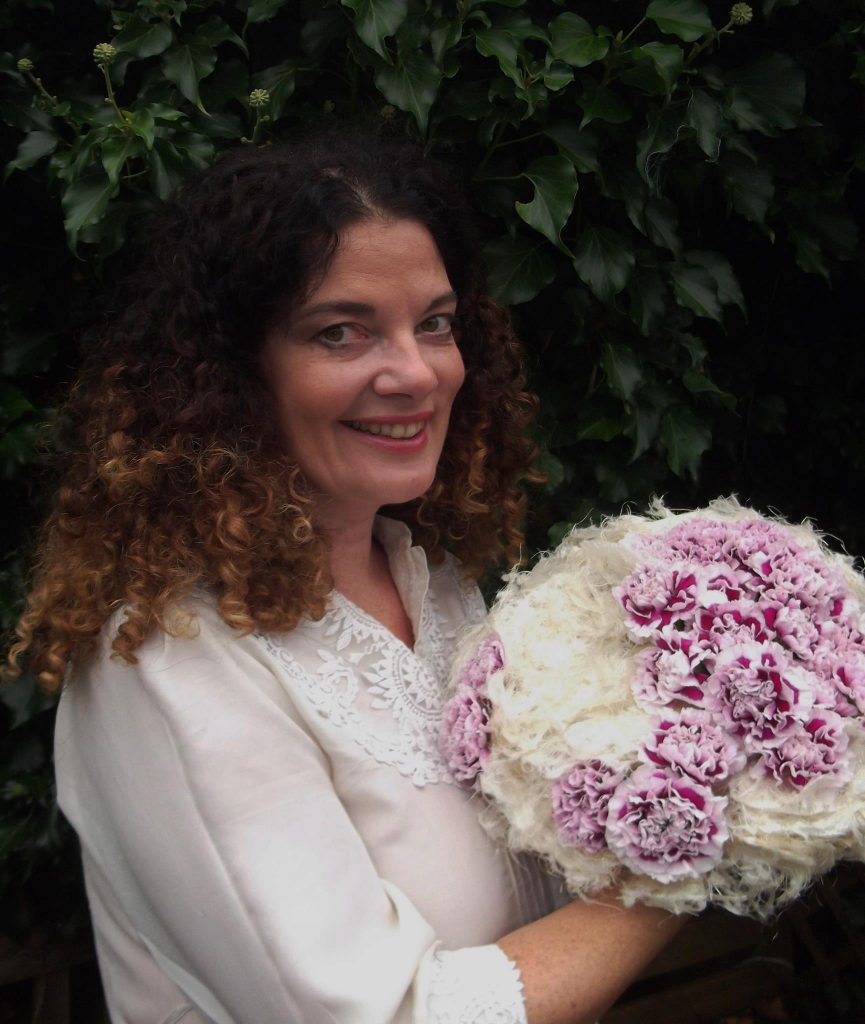
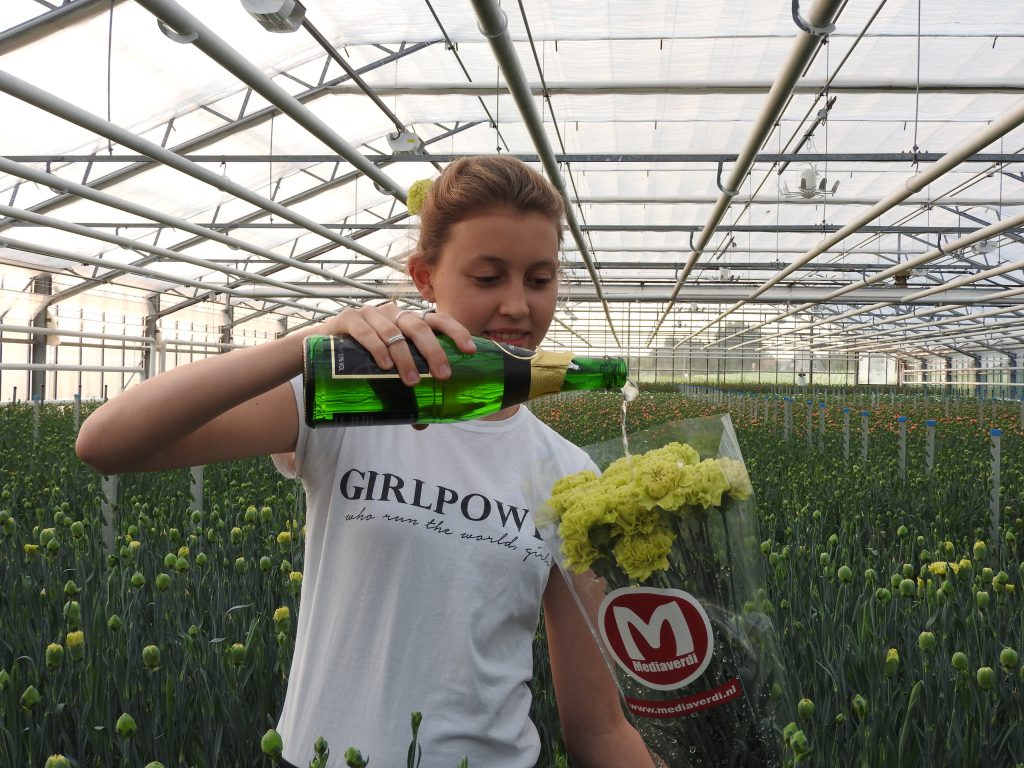
Step 4
Every year we receive about 80 different carnation varieties on trial from various cultivators. From these we choose the beautiful new varieties to be grown next year. We base our selection on quality, growing properties, resistence to diseases and colour.
In this way we try to introduce several new varieties every year! In some cases the cultivator allows us to name the new Carnation. Thus, we have named a carnation after the British floral-designer Laura Leong: Dianthus ‘Laura’. We also had the privilege to name a carnation after our cousin Fabiënne: Dianthus ‘Lady Fabiënne’. Of course, Fabiënne was allowed to baptise the ‘Lady Fabiënne’, which happens to have her favourite colour!
Step 5
Early November we start digging up the spent carnation plants. First we cut off the tall remains of the crop, then we remove the plants from the substrate. The plants are taken to a composting processor and the substrate is re-used by fellow growers or horticulturists. Once the greenhouses are empty they are cleaned on the inside and are prepared for snowball bush season.
